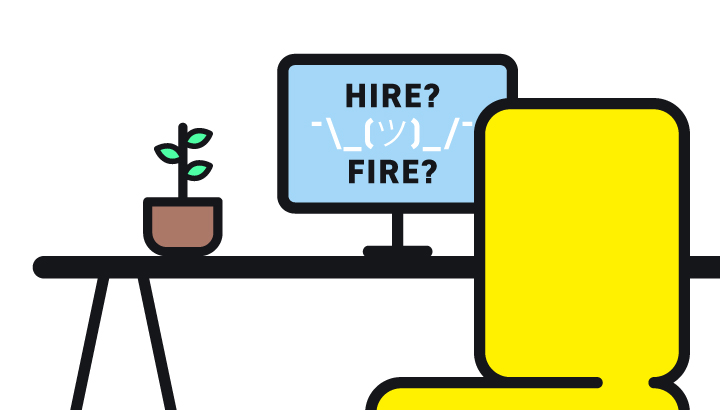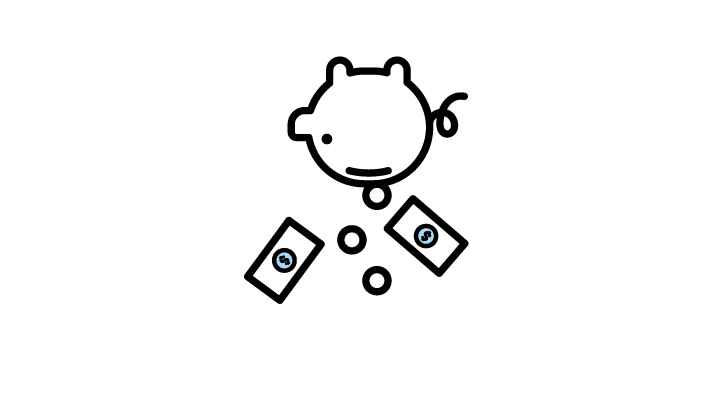When it comes to bad hires, Hiring Managers and Recruiters feel the same pain. You know the scenario: the candidate made it through the first month and started to struggle. Maybe it’s culture fit or perhaps something went wrong during the screening process, but somehow, the new employee isn’t exhibiting the skills or attitudes that seemed to shine so brightly during the interview process. They’re rocking the boat, not doing the job, and it’s just not working out.
Hiring is a huge responsibility and an inexact science. Despite our best efforts, sometimes we hire the wrong person.
How can a hiring team reduce its chances of having an April Fools’ joke played after the employee onboarding is over? What can companies do to reduce the chances that they hire the wrong person?
What Makes a Bad Hire?

Every new hire begins with a job description. That’s where the trouble starts.
When developing the criteria for a position, the negatives are easier to define than the positives. Sometimes a Hiring Manager or Recruiter is better at describing what they don’t want to see in their new hire than they are at describing exactly what the new hire will do.
Developing the criteria for the perfect candidate is both easy and hard. Easy, because the list of the necessary requirements to do the work (like specific computer or software skills) are tangible.
Hard, because human qualities like perseverance and the ability to collaborate are intangibles that are harder to define and screen for. How do you really know if the candidate will have a good attitude? How can you know whether the person will fit in with an existing team? The answer to these questions won’t materialize until the candidate becomes an employee.
Every new hire brings an element of guesswork. That’s why CareerBuilder says nearly three in four employers are affected regularly by a bad hire. It’s a common problem because of the intangibility involved in hiring a human.
CareerBuilder cited some of the most common reasons for making a hiring mistake:
- Candidate lied about their skills and qualifications
- Hirer assumed the candidate could learn the skills they needed on the job
- Took a chance on hiring a nice person
- Felt pressure to fill the position quickly
- Couldn’t find a better candidate at the time
- Focused more on skill than attitude
- Ignored warning signs
- Lacked tools to find the right fit
- Didn’t complete a background check
- Failed to work closely with HR
Now that we know what went wrong, what constitutes a bad hire? While each organization is different, there are some consistent patterns of when good candidates turn into bad employees.
For example:
- Negative Nellies can wreck a good culture fast. A new hire that turns into a jerk is one of the most difficult negative influences to mitigate. Watch for behind-the-scenes complaining and a generally poisonous attitude.
Interview Screening Tips: Avoid candidates that badmouth former employers or express negative sentiment during the interview. - Fake It ’Til You Make Its are the new hires that lied or overinflated their skills during the interview process, but within the first few weeks on the job, it became clear they were in over their heads. This situation impedes working relationships and negatively affects department productivity.
Interview Screening Tips: Pre-employment skills testing for some roles may weed this out. Use behavioral interview questions and background checks to measure real experience. - The Passive Aggressives are new employees that fail to take initiative to learn new things or help others. They may have a hard time grasping tasks or need supervision for even small chores. They may also start to come in late or make excuses to leave early.
Interview Screening Tips: Use behavioral screening to ask questions like, “Tell me about a time when you had to use your own initiative to learn something new?” - The Aggressive Aggressives are the exact opposite. If the new employee comes in hot with a know-it-all attitude or starts angling for a leadership role, it can create some serious friction within a department. Being a go-getter is one thing, but these employees start stepping on toes with an attitude of “Let me show you how it’s done.”
Interview Screening Tips: Try to discern where the employee sees herself in a few years. It’s an important indicator of ambition, which isn’t a bad thing, but also of unrealistic expectations that don’t fit your company culture.
What happens when one of these disruptive employees makes it past the candidate screening process? What’s the real cost of a bad hire?
The Cost of a Bad Hire
 The cost of getting it wrong is high: each bad candidate costs a company about 30% of the individual’s salary, according to the HR Exchange Network. The financial toll is one thing, but each bad hire, no matter how long they stay on board, creates an environmental disruption ranging from a light spring rain to a tsunami. The cultural impact of a bad hire necessitates that employers follow the old “hire slow, fire fast” rule in order to mitigate the impact of:
The cost of getting it wrong is high: each bad candidate costs a company about 30% of the individual’s salary, according to the HR Exchange Network. The financial toll is one thing, but each bad hire, no matter how long they stay on board, creates an environmental disruption ranging from a light spring rain to a tsunami. The cultural impact of a bad hire necessitates that employers follow the old “hire slow, fire fast” rule in order to mitigate the impact of:- Lowered morale, that productivity killer, is caused by bad hires up to 95% of the time, according to Entrepreneur magazine.
- Decreased productivity—39% of companies report a dip in employee output when even one bad hire happens.
- Disrupted teamwork happens about 60% of the time when a new employee is the wrong fit. If that person is a manager, the negative impact is greater.
- Reputational damage that can spring from a bad hire can have a huge impact on your ability to hire top talent. If good candidates perceive that your company has a revolving door of employees, they will run away. If even one of the bad hires goes on Glassdoor to file a negative comment, it will sully your company’s image.
The hiring process carries an enormous risk because it is the people behind the products and services you offer who can make or break company profit and loss numbers. Fortunately, we can learn from our mistakes.
Ten Ways to Increase Chances That You’ll Get It Right Next Time

The best way to avoid being April fooled by a bad hire is to follow these suggestions to improve your chances of getting it right:
- Go back to the drawing board on the job description.
Job one is letting go of the bad hire. Job two should be reviewing the responsibilities and skills necessary to excel in the role. Analyze the work environment and look closely at the existing team to determine what skills will complement and not disrupt workflows. - Develop a recruiting strategy based on the new job analysis.
The refreshed job description may necessitate new strategies for the search and screening process. How have the criterion changed and how will that impact the candidate search? - Increase your efforts to look for quality referrals.
The referred candidate is a known quantity. In a low unemployment market, the best candidates are probably working for someone else. Ferret out this talent by mining networking connections and you’ll increase the chances that you’ll get it right this time around. - Slow down on resume reviews.
Carefully match the new job description to the skills listed on each resume. Be discerning. Once you have a pile of potential candidates, take the time to scan their social media profiles to look for red flags. Prescreen the best candidates by phone and make sure to ask salary expectations. - Include the team in the interview process.
There’s no better way to hire for cultural fit, particularly within the microenvironment of an interdepartmental setting, than to include current employees in the interview process. Sure, there is a bottom-line cost to taking managers or workers away from their work to help screen candidates, but it costs more to make the wrong hire. - Use behavioral interview questions.
Most organizations that use behavioral interviewing swear by the approach. The idea behind it is that past behavior is a predictor of future work. Instead of asking a candidate to share their job duties, for example, the behavioral interviewer asks for a story about how the candidate solved a problem while conducting those tasks. - Conduct due diligence.
It’s tempting to skip reference checks, but don’t. If the candidate is listing a former employer as a reference, that is a good sign. Also, you may conduct a background check depending on the type of role you are hiring for. - Screen for these characteristics.
Forbes published a list of the top 15 character traits you should screen for in any potential hire. They include:
Action-oriented Ambitious Autonomous Confident Culture fit Detail-oriented Hard-working Honest Intelligent Leader Marketable Modest Passionate Successful Upbeat - Go with your gut.
With two perfectly good candidates in front of you, how do you pick the right one? What sets one candidate apart from another when their experience and credentials nearly match? Don’t discount your instincts as the interviewer. You could make an argument that tapping into instincts simply increases the risk that managers hire people they like instead of being more scientifically discerning, but likeability signals a potential culture fit — and if the candidate also has solid job skills, they could be the perfect hire. - Don’t get fooled — talk to Artisan.
A partnership with the nation’s leading creative talent organization could be exactly what your hiring process needs. Artisan Talent does one thing really well: we find our clients the best employees. When the labor pool is tight, this is of particular value, of course, but don’t discount the positive effects of adding expertise to your interviewing team. Artisan Talent has a long track record of finding the right talent for the right job.
Improve your chances of hiring well. Start the conversation with Artisan Talent today.


/GenZ_Communication.jpg?width=436&height=255&name=GenZ_Communication.jpg)

